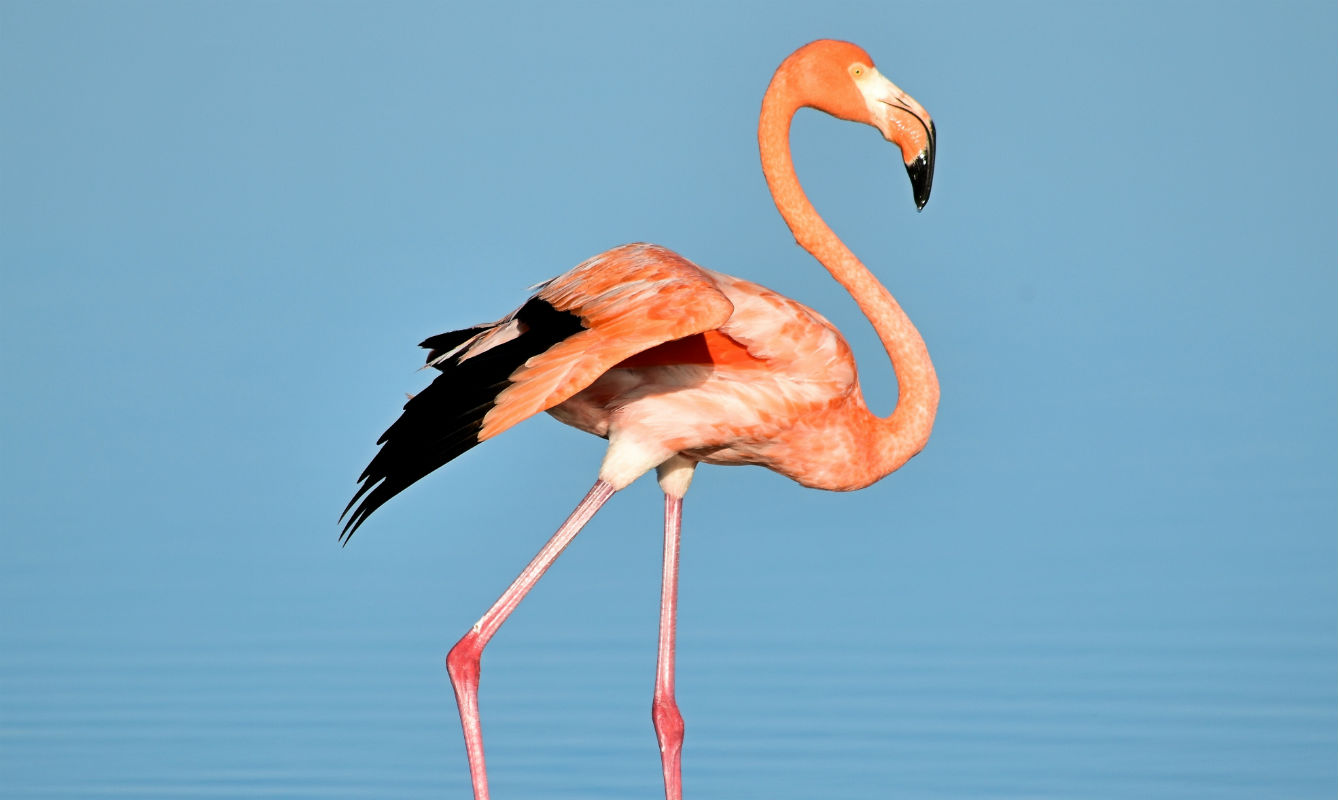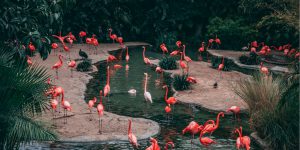
When you think of Florida sometimes the image of a Flamingo comes to mind. A frequently asked question is “Are flamingos native to Florida?” Some newer information published in the American Ornithological Society’s February 2018 issue indicates that flamingos may have been in Florida in very large flocks since the 1800s. People sought out the flamingo plumage during this period which may indicate that flamingos are native to Florida. Stay tuned for more on these studies.
Where are the flamingos?
If you want to see a flamingo in the wild, look closely in our wetland habitats. You’ll find flamingos throughout the world’s warmer regions, near shallow lakes and lagoons. Robert Torres, a field representative for The Nature’s Conservancy, said he saw flamingos in the wild at Snake Bight, part of the Everglades National Park in Monroe County. Flamingos like estuaries and saline or alkaline lakes. Think pink and large as you look for them in your binoculars. But not all flamingos are a vivid shade of pink. Let’s learn about its diet.
What do flamingos eat?
Since flamingos live near water, they feed on many organisms within the water systems. The flamingo’s color varies depending on its diet. Their vibrant pink or reddish color comes from eating algae and small crustaceans such as shrimp that have carotene pigments (carrots have them too). In the Caribbean area, flamingos have coral-red feathers. In South America, flamingos have pinkish-white feathers. Flamingos fish while walking in shallow water and mud. When a flamingo spots potential dinner—favorite foods include shrimp, snails, and algae—it plunges its head into the water, twists it upside down, and scoops the fish using its upper beak like a shovel.
Are flamingos good parents?
Coincidentally, both parents work on raising the family. Flamingo parents build mud mounds for nesting. They rely on the water so their nests can be found along waterways. The mother lays one egg in a shallow hole on the mud mound. Around 30 days of sitting on the nest, a chick is born. Flamingo young are born white, with soft, downy feathers and a straight bill. Both parents take care of the newborn flamingo, feeding it a fluid produced in their digestive systems. The young leave the nest after about five days to join other young flamingos in small groups, returning to the parents for food. The parents identify their chick by its voice.
Some of their characteristics
The bill gradually curves downward as the flamingo matures. They have long legs and their neck is normally crooked like the letter ‘S.’ As a result of long legs, flamingos are known for “running” on water with their webbed feet to gain speed before lifting up into the sky. Considering their appearance, flamingos are good swimmers.
Fun Facts
Fact #1 – There are five types of flamingos. The most common type is the lesser flamingo, found mainly in eastern and southern Africa and India. The rarest flamingos are the Andean and James’ flamingos, which reside near highland lakes of the Andes Mountains in South America.

Fact #2 – Adult flamingos stand between three and six and a half feet tall.
Fact #3 – Flamingos can live from 20 to 30 years in the wild. In captivity, flamingos can live even longer.
To learn more about Florida’s animals, visit: https://sfyl.ifas.ufl.edu/manatee/natural-resources/master-naturalist-program/
Join us on Facebook. https://www.facebook.com/ManateeCoExtension
 1
1
